
How to Use a Stove Gimbal

Last Updated by
Elizabeth O'Malley
June 15, 2022
If you want to know how to cook on a gimbaled stove, put on your safety strap and get ready to go with the flow!
Despite the challenges that gimbaled stove cooking presents, read on to learn differences between fore/aft stoves and athwartships stoves, why counterbalancing a gimbal stove is important, key parts of and accessories for a gimbal stove, and how to get started slowly and build confidence when gimbal-stove cooking.
Whether you want an omelet and bacon for breakfast or a pot of chili for cold winter nights aboard, you need to know all about gimbaled stoves, how to cook on one, when to cook on one, and if you should cook on one. I’ll cover all this and provide some tips for taking gimbaled-stove cooking to the next level.
While these days, I’m primarily a day sailor, I am an enthusiastic hostess and take any opportunity I get to clamber aboard friends’ boats and take over the galley. Many experienced sailors I know are hesitant to even bother with “fancy cooking” (which some folks consider gimbal stove cooking to be). They are often content cooking with the outdoor grill and maybe a pressure cooker, but when I can borrow a friend’s galley as a “test kitchen,” I jump at the chance. It’s a (mostly) fun learning experience and the compliments during and after meals are (mostly) worth the sometimes unsettling, make-it-up-as-you-go moments that often happen when cooking on a gimbaled stove. Let’s go over a variety of things to keep in mind when you’re deciding if French onion soup and flourless chocolate cake courtesy of the gimbal stove really need to be on the underway menu.
Table of contents

What is a Gimbal or Gimballed Stove?
In short, a gimbal stove has the ability to swing – with the motion of the boat – so that, just like your legs and knees “swing” with the movements to keep you from tipping over, the stove swings so that pots and pans and tonight’s dinner don’t go sliding off and crashing and splashing all over the galley (or the cook)! Typically, but not always, a gimballed stove runs fore and aft and like a gimballed compass or gyroscope (or even gimbal drink holders), the point is to keep the item (stove, gyro, compass, drink) upright even when the boat rolls or pitches.
Measuring how many inches your stove can swing can be translated into degrees – and gimbal stoves will swing anywhere from 20 – 40 degrees. Candidly, when you get up into the high end of that range, cooking on a boat stove, despite the desire for a hot meal, probably loses a good bit of allure (certainly for the cook). Of course, if you can coax the (fairly experienced) skipper into a heave-to situation you may be able to achieve your goal – it’s just not something I’m willing to risk. (And, per a good friend’s experience: practicing heaving-to while concurrently learning how to cook on a gimballed stove is highly inadvisable!)
Were a stove not to be gimballed on a boat (and there are boats with stoves that are not gimballed, but hard pass for me on that setup), even with pot restraints in place, the likelihood of spills, splashes, and crashes is extremely high. So, what’s a cook to consider when contemplating a gimbal stove adventure?
To Gimbal Fore/Aft or to Gimbal Athwartships?
Depending on the direction a gimbal stove faces, the direction that the stove tilts will vary -- because of the direction of the axis of the gimbal. So, it will either tilt fore/aft or port/starboard. Most boats are going to come with a fore and aft-gimballed stove, but in case you are custom-building or considering refitting your galley, a few things you should consider relative to an athwartships stove set up:
- Rather than facing port or starboard, the cook will look fore or aft. This can be helpful because should a splash or crash occur, the contents will likely spill to one side or the other (port or starboard) and not fore/aft -- in the direction of the cook.
- Athwartships stoves will likely take up less (swinging) space than a fore/aft set up but there’s a beam consideration because of the rectangular shape of the stove and it’s widest sides would be athwartships. crashing
- Athwartships allows for a greater degree of swing than fore/aft stove setups, which decreases the possibility of the oven door banging open. (More on door latches to come!)
- Also, something to keep in mind: the closer the stove is to the centerline, the less overall movement the stove is subjected to. This is a good thing and is much harder to achieve with most stoves aligned fore/aft to a wall.
Counterbalancing on a Gimbal Stove
Depending on the number and location of burners on the stove, when using the stove in a gimballed and not locked position, it’s a good idea to counterbalance the active hot burner with a pot filled with water of equal weight – kind of like keeping scales balanced or a seesaw balanced. This helps keep the stove even keeled, so to speak.
Equipment to use with a Gimballed Stove
Safety strap for the cook.
While opinions are greatly divided on the use of a safety strap for the cook in the galley, I am pro-safety strap – depending on the way that the galley is configured. Some fear that a strap can trap the cook in place should a big wave or roll launch piping hot or boiling contents off the stove – a legitimate fear, I guess. These folks sometimes express similar reservations about car seat belts because they “can trap you in your car if it’s on fire and you can’t get out.” But a safety strap doesn’t have to be as binding and constricting as a seat belt and doesn’t have to lock you in place directly in front of the stove. Galleys vary – U-shaped, L-shaped, open, tight – and just as in kitchens the way you move in different spaces is going to vary. Taking the shape of the galley into consideration as well as the likelihood of the need to be cooking in such rough conditions that warrant a safety strap are the priority criteria for myself and other much more seasoned gimballed-stove cooks.
Gimbal Stove Latches
There are two important latches or locks on gimbal stoves.
- The stove latch secures the entire stove into a locked, non-swinging position. At anchorage, it may be possible to use the stove in the latched position, recognizing that even small waves can slosh a pot’s contents or slide a pot off a burner. (Fiddles or pot restraints to minimize this possibility are covered below.)
- The oven door latch keeps the oven door from crashing open in choppy conditions. Securing this latch becomes second nature by the third time the unlatched door flails open, regardless of whether there’s a meal cooking inside.
Pot Restraints and Fiddles
Two items that help keep pots and pans in place whether in the oven or on the stove top are pot restraints and fiddles. Fiddles exist in various forms throughout boats – on flat surfaces – to act as a catcher to keep items from sliding off the flat surface. You can have fiddles on shelves, tables, and yes, appliances like a stove. Until I got a bit saltier and learned they were called fiddles, I called them bumpers or guard rails – not exactly sailing jargon – but landlubbers knew what I meant.
Pot restraints on the other hand are like little arms that reach out and “hug” pots and pans on the burners. They are attached to rails and are often adjustable and can slide to accommodate different positions and different sized pots and pans. If you are going to be cooking on a galley stove – gimballed or not – both pot restraints (or pot clamps) and fiddles are, in my world, absolute musts.
When Cooking with a Gimbal Stove -- Practice, Practice, and More Practice
If you turn your nose up at sandwiches for dinner or you’re a gourmet chef at home and want to take that passion underway for the culinary enjoyment of family and guests, my best piece of advice is to practice cooking on a gimbal stove Every Chance You Get. Start small. Start slow. Start low. Start thick.
Start slowly by doing your cook-be-nimble gimbal-practice sessions on very light wind days when it’s flat as can be. That will help you get experienced with the speed of both the swing of the stove and the slosh rate within the pot. Starting slow and steady gives you the ability to watch and learn how a gimbaled stove compares and contrasts with the fixed ones you’ve used all your life until now. If it’s really flat out there, give the stove a few pushes to get it swinging and re-create a more action-oriented scenario.
Start small by only working with one burner at first – learning how to counterbalance with another pot or kettle filled with a comparable weight of liquid. Remember balance – like balancing scales or a seesaw. Start low by filling your pot no more than 20-30%. Push the unlatched stove on its axis, making it gently rock and watch the contents of the pot slosh about – you’ll be surprised at how much movement there is. You’ll gain an appreciation for what it might be like if it wasn’t so flat and if the pot was filled to 50% or more. (And take note for the future to cook with the deepest pots practical and fill them to the lowest point that’s practical every time you cook.) High pot sides and low content levels are a good combo for cooking pots on a boat.
Start thick by cooking more dense food options. This goes for the burners as well as the oven. Preparing oatmeal is easier for a gimbal-stove newbie than preparing spaghetti because of the liquid to solid ratio. When possible, steer toward more solids – for example, I’d go with stew over vegetable soup. One is just denser so less likely to slosh and gain energy for splashing and crashing. In the oven, start by bringing frozen casseroles on board and reheating them. It may sound mundane but you’ll be learning the movement of the gimbal with less room for error. Baking cookies is a lot safer than a flourless chocolate cake that requires the cake pan to sit on a water bath, and if someone turns up their nose at warm cookies right out of the oven, politely suggest that they step overboard.
Cooking on a gimballed stove is not for the faint of heart. It does, I believe, require a bit of courage, lots of common sense, catlike reflexes, and, ideally, an almost intuitive sense of physics. But come to think of it, all those traits make a good sailor a great sailor, even if he or she never lays a finger in the galley. So, remember, practice, practice, and more practice will help get you nimble with the gimbal – and, after a while, the whole crew will be raising a toast to the chef while dining on French onion soup and flourless chocolate cake! Bon appetit!
Related Articles
Elizabeth has sailed Sunfish, Catalinas, Knarrs, and countless other boats. Forty years later, she finds herself back on the waters of Bogue Sound, where she lives and sails with her daughter, Morgan, and chocolate lab, Choco.
by this author
Most Recent

What Does "Sailing By The Lee" Mean?
Daniel Wade
October 3, 2023

The Best Sailing Schools And Programs: Reviews & Ratings
September 26, 2023
Important Legal Info
Lifeofsailing.com is a participant in the Amazon Services LLC Associates Program, an affiliate advertising program designed to provide a means for sites to earn advertising fees by advertising and linking to Amazon. This site also participates in other affiliate programs and is compensated for referring traffic and business to these companies.
Similar Posts

How To Choose The Right Sailing Instructor
August 16, 2023

Cost To Sail Around The World
May 16, 2023

Small Sailboat Sizes: A Complete Guide
October 30, 2022
Popular Posts

Best Liveaboard Catamaran Sailboats
December 28, 2023

Can a Novice Sail Around the World?

4 Best Electric Outboard Motors

How Long Did It Take The Vikings To Sail To England?

10 Best Sailboat Brands (And Why)
December 20, 2023

7 Best Places To Liveaboard A Sailboat
Get the best sailing content.
Top Rated Posts
Lifeofsailing.com is a participant in the Amazon Services LLC Associates Program, an affiliate advertising program designed to provide a means for sites to earn advertising fees by advertising and linking to Amazon. This site also participates in other affiliate programs and is compensated for referring traffic and business to these companies. (866) 342-SAIL
© 2024 Life of Sailing Email: [email protected] Address: 11816 Inwood Rd #3024 Dallas, TX 75244 Disclaimer Privacy Policy
- After Sales Service
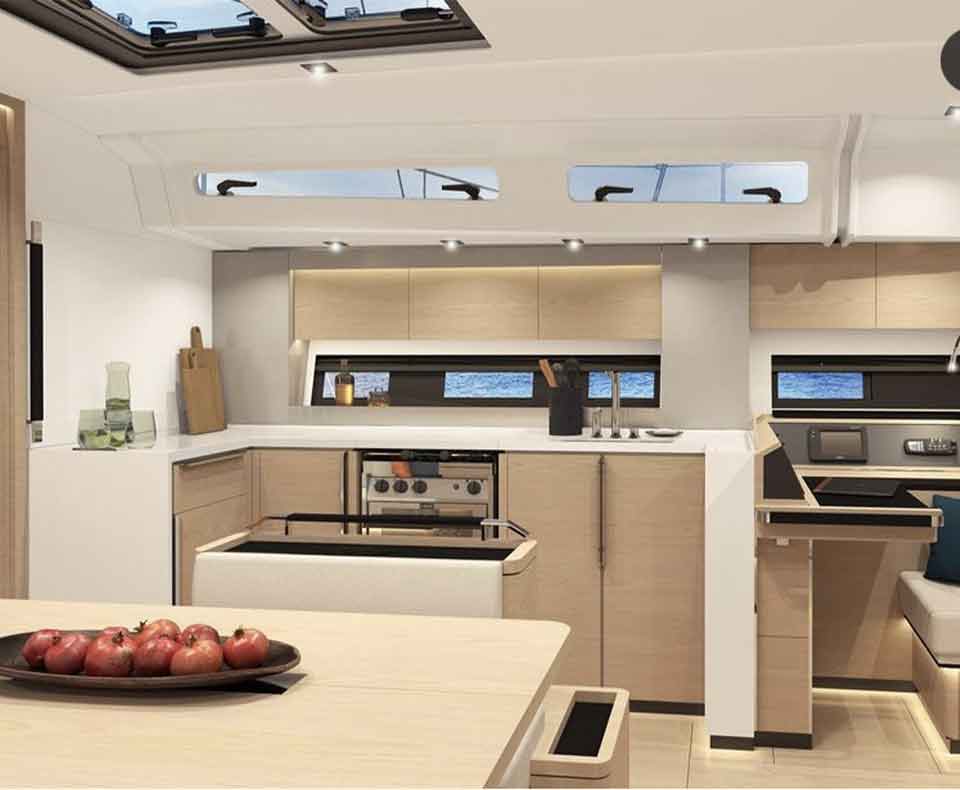
Gaz gimbal stove
Choose your 2, 3, 4 or 5 burner stove, with or without grill depending on the style of your boat; placed on a gimbal, you can cook in all weathers.
Gas gimbal stove
2-burner stove.
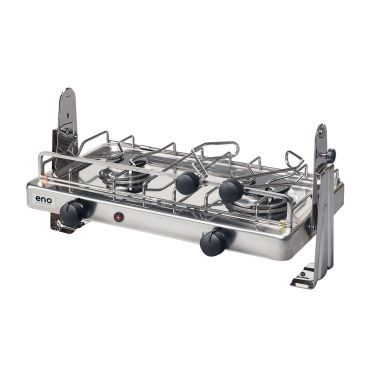
XTREM 2 Stainless gimbal ignition AGA US
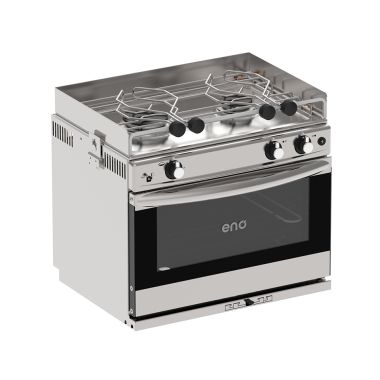
GRAND LARGE 2 stainless cooker AGA
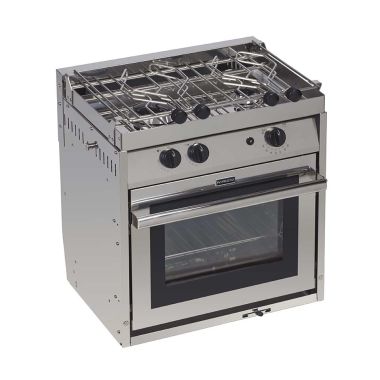
2 burner gimbaled gas cooker NA std
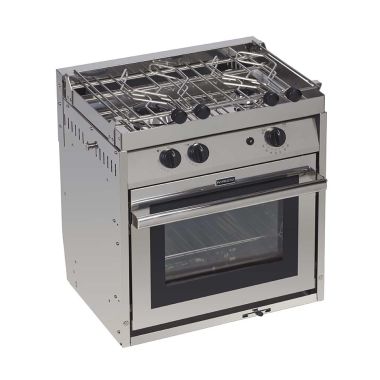
2 burner gimbaled gas cooker NA compact
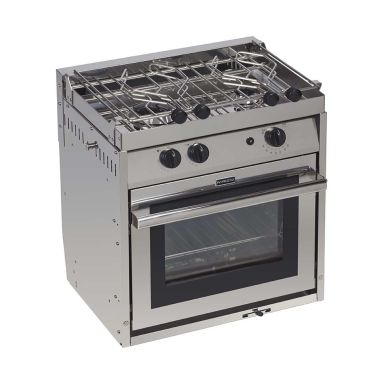
2 burner gimbaled gas cooker Euro sub-compact
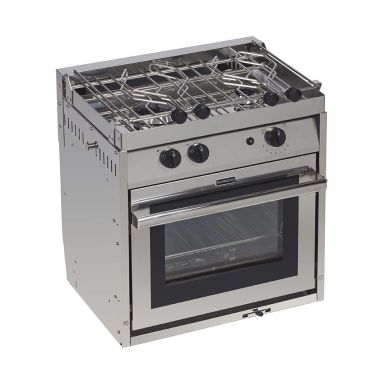
2 burner gimbaled gas cooker Euro std
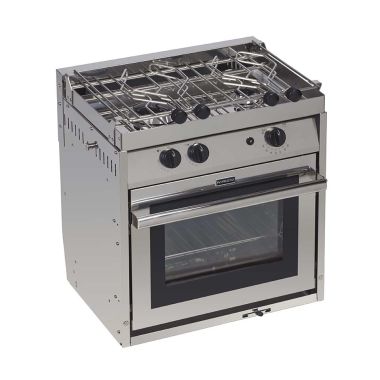
2 burner gimbaled gas cooker Euro compact
3-burner stove.
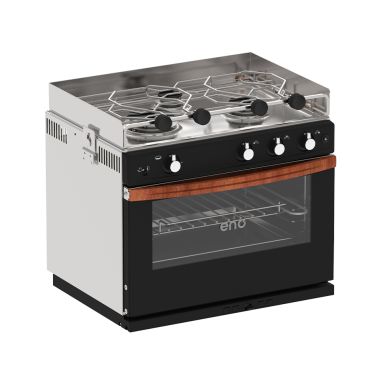
ALLURE 3 stainless cooker AGA
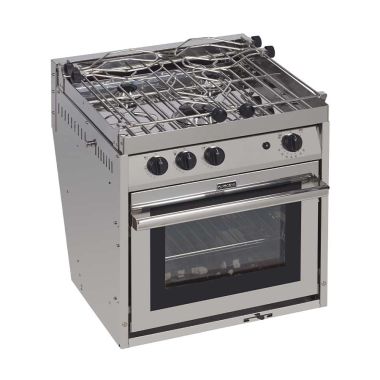
3 burner gimbaled gas cooker NA std
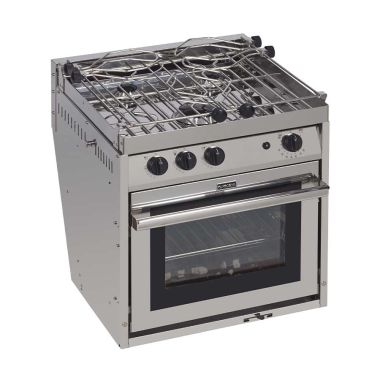
3 burner gimbaled gas cooker NA compact
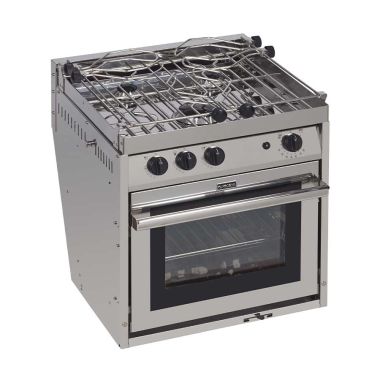
4-Burner stove
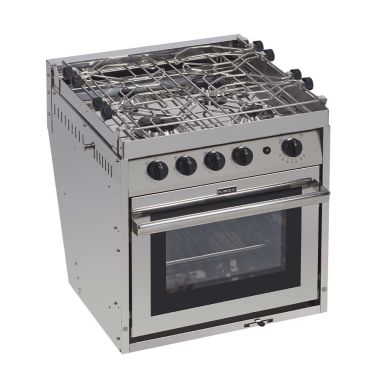
4 burner gimbaled gas cooker NA std
5-burner stove.
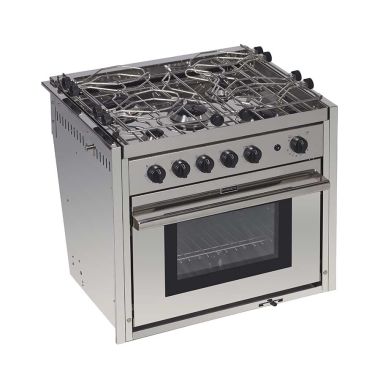
5 burner gimbaled gas cooker

- Skip to main content
- Skip to primary sidebar
- Skip to footer
The Boat Galley
making boat life better
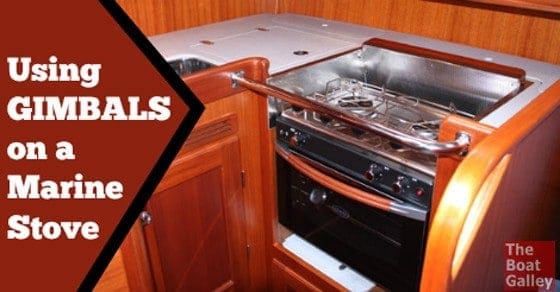
Using Gimbals on a Boat Galley Stove
Published on September 2, 2011 ; last updated on January 20, 2023 by Carolyn Shearlock
Together with pot restraints , stove gimbals are an important safety feature of any marine stove. The first time I used the gimbal — on our first charter — I felt like a true “cruiser.” In the years since then, it’s become common place to use a swinging stove.
The gimbal is the second half of keeping your pans on the stove or level in the oven. Basically, it’s a pivot point running fore and aft that lets your stove/oven stay level, even when the boat is heeled or rolling.
Generally, gimbaled stoves have a latch that keeps the stove from swinging when it’s not in use or not needed. These are usually some form of barrel latch that you slide to release. Once released, the stove will swing with the motion of the boat. While I use my pot restraints all the time, I don’t always release the gimbal latch — if conditions are calm, particularly in anchorages, it’s easier to have a stove that stays in one place.
In using a gimbaled stove, there are two important points:
- Most gimbal systems will let the stove swing 20 to 30 degrees, at which point it will crash against the back wall. If it hits with any force, pans are likely to fly off the stove onto the floor or onto the cook. While pot restraints keep pans from sliding, a sudden crash can bounce the pot right out of the restraints. It’s also not good for the stove to crash into the hull.
- The gimbal is simply a balance point — if the weight on both sides isn’t equal, the stove will tilt towards the heavier side and won’t keep the cooking surface flat.
Thus, if conditions are rough, you need to check the swing of the stove before using it. Release the latch and watch the stove swing for several minutes, preferably through the worst movement the boat is experiencing. If the stove crashes into the wall , forget about cooking and find something cold to eat.
Second, you’ll have to equalize the weight on both sides of the pivot point. For example, if you want to cook something on a front burner, fill the teakettle or a saucepan with water and set it on an unlit back burner (using its pot restraints). Adjust the amount of water until the stove is approximately level. This will also help keep the back of the stove from hitting the hull since the bottom of the stove won’t be jutting out to the back.
When you are finished cooking, latch the stove again so that if conditions worsen the stove won’t hit the hull.
One more tip for cooking in rough weather: a pressure cooker makes a good pan to use since you can latch the lid, even if you don’t use the weights and pressure cook. Food is far less likely to slosh out with the lid latched and — heaven forbid — if the pan does fly off the stove, there’s less chance that the (hot) contents will be flung everywhere.

And check out our other courses and products
Find this helpful? Share and save:
- Facebook 761
- Pinterest 48
Reader Interactions
Kate Bird on Facebook says
July 2, 2012 at 9:04 am
We were hove to during a storm and I left a pan of spaghetti sauce on the stove top while we held on waiting for things to calm down. Those gimbles kept the pan from coming off the stove and spilling during that gale – it was amazing, I was sure I’d have to clean up a big mess.
Alex Kimball on Facebook says
February 10, 2013 at 4:49 pm
Use them every day? Got to when we sail do much.
Patty Alderson on Facebook says
When offshore, all the time. In an anchorage, really depends on the conditions or traffic…
Claudia Davis Reshetiloff on Facebook says
February 10, 2013 at 4:59 pm
ha! I just took a picture on our last passage of the stove at a 45′ angle to the rest of the galley and food cooking on it….I think some people back home will be surprised…
The Boat Galley on Facebook says
February 10, 2013 at 5:04 pm
Claudia – That’s a great boat if it can swing that far — someone was really thinking when they planned the galley! Mine could MAYBE go 30 degrees . . .
Anne Dunlop on Facebook says
February 10, 2013 at 7:23 pm
Everytime we go sailing – otherwise the contents of the oven fall out and all my pans go flying!!
Gretchen Hannsz Witzgall on Facebook says
February 11, 2013 at 9:04 am
Last season when we went to the Bahamas whenever we were under way the stove was gimballed. I baked a homemade pizza underway in the middle of the Gulfstream 200 miles offshore on our way back from Abaco direct to Beaufort, N.C. – It was a bit of a struggle but I was determined – I love our Force10 – not sure what her full degree of gimball is at full capacity of gimball but she gets the job done.
Dave Skolnick (S/V Auspicious) says
October 7, 2013 at 9:44 am
Carolyn makes many good points.
Her point on weight balance is well taken. Two burner cookers are obviously much easier to keep balanced than three or four. The weighted kettle idea is a good one.
The other consideration not mentioned is the oven door type. Some ovens have a door that slides down and under the cooker which is great from a balance perspective. Others, like my Eno, just open and tip the oven forward. Accordingly when using the oven at sea I latch the gimbal before opening the door to avoid a lap or floor full of lasagna or pizza.
Carolyn Shearlock says
October 8, 2013 at 7:55 am
Good point on the oven door, Dave! Thanks
April 18, 2014 at 1:15 pm
Don’t forget to have a good way to secure the stove in case of a knockdown, throwing it on the galley deck and rupturing the gas line. Not all stoves have something to prevent the stove from sliding out of its V-bracket mountings. Jt
September 20, 2014 at 5:51 pm
My stove gimballed sideways –but not fore and aft. Many times I had to quickly save a pot at a huge bow or stern wave… Have potholders ready, have pots twice as deep as you need, don’t use glass (esp. pie pans) and don’t fill pots more than halfway.
Tim Berry says
January 3, 2022 at 12:47 am
Eric Hendricks says
September 21, 2014 at 12:50 pm
always on gimbals if away from the dock.
Skylar Walker says
September 21, 2014 at 5:10 pm
more great advice
Claire Camden says
April 23, 2018 at 4:21 pm
How do I remouve a gimbal stove off of my boat? It’s a C&C 30.
April 23, 2018 at 4:26 pm
Most have a latch on the horizontal pivot that you can release. The good news: if you no longer have the owner’s manual for your stove to find out how to release it, you can almost always find it online by Googling on the make and model of stove. If you don’t find it that way and the stove was original to your boat, ask in the C&C Owner’s Group — someone else is sure to have done it. Just be sure to state what stove or at least the year of your boat as not all boats are identical.
Jim Yancy says
October 5, 2019 at 4:03 pm
About to go on first off shore three day run. 1979 Catalina 27 had old alcohol 2 burner which is now gone. we have used a little butane 2 burner dockside.
question : we want just boil water for quick drinks or add to meals. Is there a gimbal mount water pot / burner thingy out there?
October 6, 2019 at 9:14 am
I know there is, because I’ve seen it on production boats at shows. I don’t know who makes them, though. I’m at the Annapolis show right now, and I’ll try to find info.
January 7, 2022 at 1:52 am
If it is just a little alcohol stove, you could make a ‘basket’ and let the whole thing swing from the roof. Lots of movement that way so you could also make a bracket that comes off the wall somewhere lower down where the movement is less and let it swing from there. Be sure to put some bungees on it to dampen the swing.
Tim Palmer says
October 10, 2021 at 3:36 am
The Forespar Mini Galley is what you describe
Leave a Reply Cancel reply
Your email address will not be published. Required fields are marked *
Each week you’ll get:
• Tips from Carolyn • New articles & podcasts • Popular articles you may have missed • Totally FREE – one email a week
SUBSCRIBE NOW
- Questions? Click to Email Me
- Visit Our Store

- BOAT OF THE YEAR
- Newsletters
- Sailboat Reviews
- Boating Safety
- Sailing Totem
- Charter Resources
- Destinations
- Galley Recipes
- Living Aboard
- Sails and Rigging
- Maintenance

How to Select a Marine Stove
- By Lynda Morris Childress
- Updated: May 7, 2020
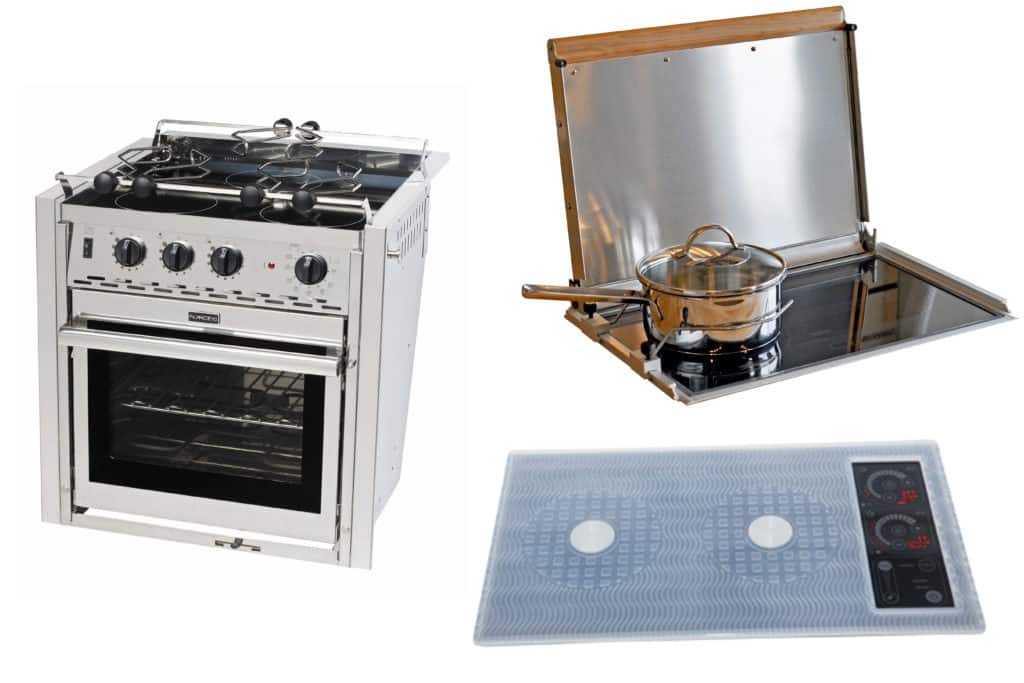
There’s no question about it: On cruising sailboats, an efficient, safe marine stove is as important as good sails, functioning systems and top-notch safety gear. The ability to prepare and enjoy home-cooked meals on board makes for a happy and healthy crew, and at the heart of it all is a reliable stove.
Many owners of pre-owned vessels have inherited the stove that came with the boat—with either happy or hair-pulling results. If you’re in the latter category, or if you wish to retire your once-reliable galley workhorse, it might be time to ponder an upgrade. There are many considerations, but one of the first things you should decide is: Which type of marine stove?
For upgrades, the three most prevalent types of marine stoves rely on liquid petroleum gas (LPG, or propane), nonpressurized alcohol and, in recent years, electric. Other types, such as kerosene and compressed natural gas (CNG) burners, have fallen out of favor for various reasons: Kerosene spills are extremely flammable, burners require priming before lighting, the fuel smells unpleasant, and the odor often permeates interior fabrics and the food itself. While some sailors still swear by it—it’s widely available and burns fairly hot—use of kerosene is waning. CNG made its appearance (along with LPG) in the 1980s, and early on was touted as the “safe gas.” Unlike LPG, it’s lighter than air and can’t settle in the bilges, though fumes can collect in other areas of the boat that aren’t well ventilated—and it still can explode. Today it’s hard to find and rarely used.
Butane, another form of liquid gas, has been used for years to fuel small, portable one- or two-burner stoves equipped with small canisters of fuel. Popular on smaller sailboats for simple cooking, and on some cruising boats as an inexpensive backup to the existing galley stove, it can be useful for preparing coffee, tea or one-pot meals without heating up the galley too much, but probably isn’t under consideration for an upgrade.
Diesel stoves are not widely considered either, but if you dislike propane and alcohol, stoves and ovens that use diesel forced-air technology, such as those made by Wallas in Finland (imported by Scan Marine ), might be worth a look. Prices range from $2,500 to $5,000.
Marine Propane Stoves
On most production cruising boats built from the mid-1980s on, marine propane stoves and ovens have been the rule. When you’re considering an upgrade, they are an excellent choice, though there remain skeptics who are either unwilling to install and maintain a propane system, or are downright terrified of propane and actually switch to an alcohol system for precisely this reason. LPG is heavier than air, and fumes can settle in the bilge if proper installation, usage and safety protocols aren’t followed, creating the potential for explosion. Most who use propane aboard safely feel that the benefits outweigh the risks: It’s available worldwide, the cost is reasonable, it burns hot and cooks food quickly, it’s odorless while burning, and it’s easy and safe to use as long as you practice strict safety measures. Propane stoves and systems on U.S. boats must meet American Boat & Yacht Council standards, which outline specific parameters for safe installation and use. The West Marine Advisor also offers tips on safe installation.
Marine propane stoves have improved over the years; most newer models have built-in safety thermocouples that automatically stop the flow of gas within seconds if a flame is not present. This feature, plus other required and optional safety measures—such as a leak-detection system, a dedicated exterior tank-storage locker, a simple electric solenoid switch that allows the gas to be shut off manually and remotely, and a vapor detector—are key to safe operation, along with careful use by all aboard. On today’s new-stove market, retailers report that the Force 10 gimbaled two- and three-burner series are top sellers. For a new two- or three-burner range, you’ll need to budget between $1,000 and $2,000, depending on make and model. If you’re short on galley space but still want propane, Eno makes compact two- and three-burner built-in and gimbaled propane cooktops, which sell for $300 to $400.
Marine Alcohol Stoves
Alcohol stoves burn denatured alcohol, and over the years they’ve suffered a bad rap: Older, pressurized models achieved widespread notoriety not for their cooking ability, but for their uncanny knack for setting anything above them (sometimes including the cook) on fire. Pressurized stoves were famously difficult to light; they required pumping and priming with alcohol to get the burners hot enough for sustained cooking, which often led to flare-ups and disaster. Compounding the problem was that an alcohol flame is nearly invisible, resulting in burns from touching a burner that was invisibly lit. Fortunately for fans of this fuel, newer, nonpressurized, highly functional models of marine alcohol stoves are available to eliminate the danger as well as the priming process. The Dometic Origo system uses canisters fitted with wool “wicks” that soak up the alcohol, allowing the fumes to be lit in a controlled way that avoids flare-ups. In addition to being nonexplosive, alcohol stoves are easy to install; every component needed comes with the stove.
But while alcohol has advantages, it also has drawbacks: Like kerosene, it has an odor when the stove is in use that makes some people queasy. It burns at a much lower temperature than either kerosene or propane, using more fuel and taking longer to cook food or even boil water, but fans of alcohol stoves claim they don’t notice or mind the slightly longer cooking times. Though more expensive overall than propane, stove alcohol is widely available in the U.S.; worldwide, it’s harder to come by. Nonetheless, alcohol marine stove proponents cite not having to worry about a possible onboard explosion and ease of installation as two benefits that outweigh all the drawbacks combined. According to retailers, the Dometic Origo 6000 is today’s top-selling alcohol stove/oven, followed closely by Dometic Origo stove-top units. New ranges are priced between $1,500 and $1,800; stove-tops are in the vicinity of $200 to $350.
Electric Marine Stoves
Until recently, electric stoves and ovens were found mainly on large powerboats and superyachts and would not have been a possibility for the average sailboat. But as new boats equipped with generators as standard equipment make their way into the mainstream market, and as more owners of older boats retrofit gensets, electric marine ranges and fixed or portable ceramic cooktops are making inroads. Most U.S.-made boat stoves require 120 volts; if a boat spends much of its nonsailing time at marinas with shore power available, or if running the generator each time the stove is used isn’t a problem, it may be a viable alternative. The price range for a new two- or three-burner electric marine stove and oven is $1,500 to $2,000; for one- and two-burner electric and induction cooktops, from the simple to the sublime, the price ranges from $100 to $900.
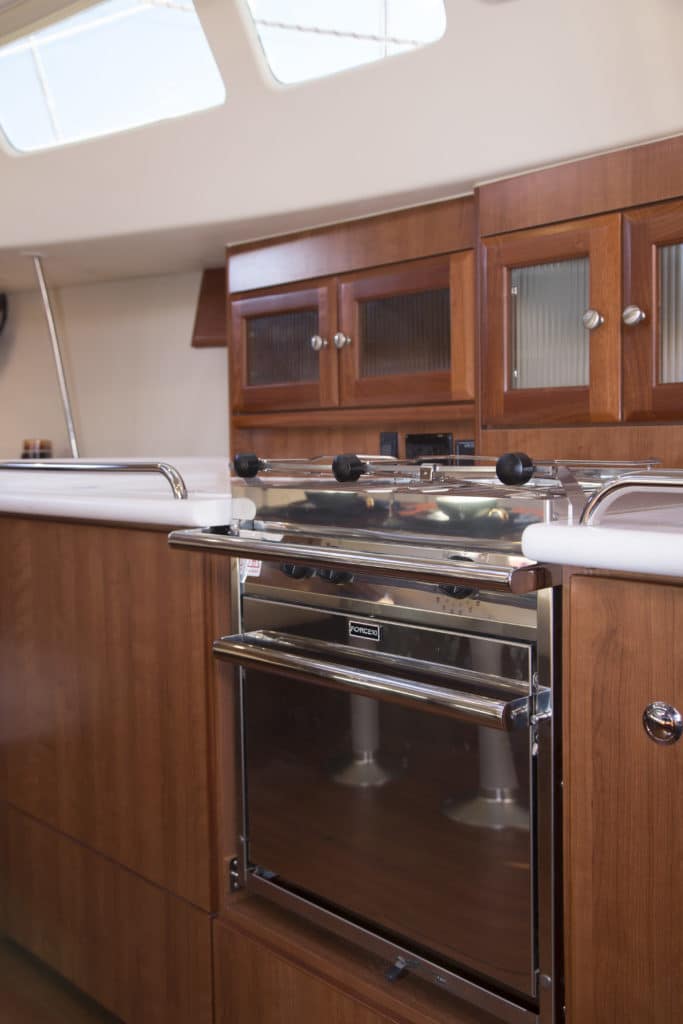
Induction Cooking
The newest trend in electric stoves is induction cooking, which cooks food using electromagnetic induction rather than conduction from electric heat or a flame. In simplified terms, when you turn on the stove burner, a metal coil beneath a ceramic cooktop uses alternating current to produce a magnetic field. When magnetic cookware is placed on top, voilà! The pot heats up, but the cooktop remains cool. The advantages seem endless: Induction stoves drastically reduce fire and burn risk, as the cooktop itself does not heat up; they don’t warm up the boat; they cook food fast and efficiently; and because it doesn’t ever get hot, the cooktop is easy to keep clean (and can double as extra counter space). One disadvantage to most electric ceramic cooktops on boats is the lack of rails or clamps to keep pots in place. Another is that induction cooktops require use of specific cookware with magnetic properties; when you replace your existing stove with one, you might also have to replace your pots. Kenyon Marine has addressed the problem of keeping pots on the stove with its innovative new Silken2 two-burner Trimline induction cooktop; it comes with a fitted, patented nonskid silicone mat that can be used during cooking. Another popular induction cooktop is the single-burner unit by Furrion. This technology is new and still evolving. If you’re on the fence about an upgrade, keep a close eye on marine induction stoves — they just may be the wave of the future.
Before You Buy a Marine Stove
Before you start to shop, answer some basic questions: How much stove do you need? How much room do you have in your galley? Where do you plan to cruise? The stove you select depends largely on how—and how often—you use your boat. If it’s a small boat with limited galley space, used mostly for daysails, weekend cruises, and the occasional overnight not far from home waters, a simple stove-top system (nonpressurized alcohol, butane or, if you have shore power, electric or combination alcohol-electric) might suffice. If it’s a midsize boat used for extended vacation or liveaboard cruising, you’ll likely want—and have room for—a marine stove with an oven. If there are only two of you aboard, a two-burner stove and oven might suffice; if you’re a family, consider a three-burner. Measure your space carefully and, unless you want to undertake a major carpentry project, be sure you select a boat stove that fits. (If you own a European-made boat, you’ll likely need to order a metric size.) If you cruise outside the U.S., choose a marine stove that uses fuel that’s available and affordable everywhere you plan to visit.
Depending on where and how you sail, there are also some stove safety features to consider. Almost all marine stoves and ovens are gimbaled, allowing them to swing back and forth, essentially remaining level when the boat is heeled (or rolling at anchor). Your best bet will be to go for a gimbaled replacement. Other safety features should include a sturdy, built-in safety rail around the outer edge to guard against pots sliding off the stove-top; a set of pot clamps to keep pots in place while cooking underway; and a latch that allows the oven door to be securely locked in place.
Choosing and installing a new marine stove doesn’t have to mean jumping from the frying pan into the fire. If you know exactly what you want before you shop and do your research on features and installation, outfitting your sailboat with a new stove that meets your needs will be worth its weight in comfort — not to mention delicious home-cooked meals.
Lynda Morris Childress and her husband, Kostas Ghiokas, cruise and charter their Atlantic 70 cutter, Stressbuster , throughout the Greek Islands.
- More: cooking , galley , How To , Refits , Upgrades
- More How To
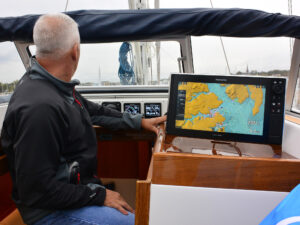
Adding Onboard Electronics? Here’s How To Get Started
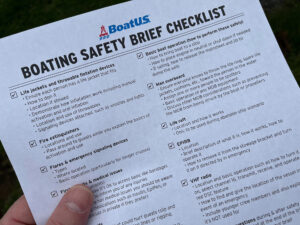
7 Boating Safety Tips for Summer Cruising
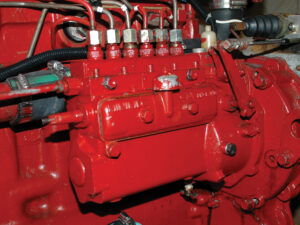
How to Prep for a Diesel You Can Depend On
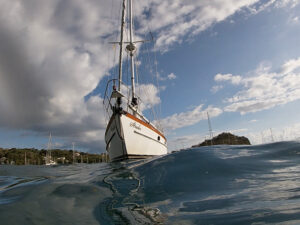
Anchoring in Paradise
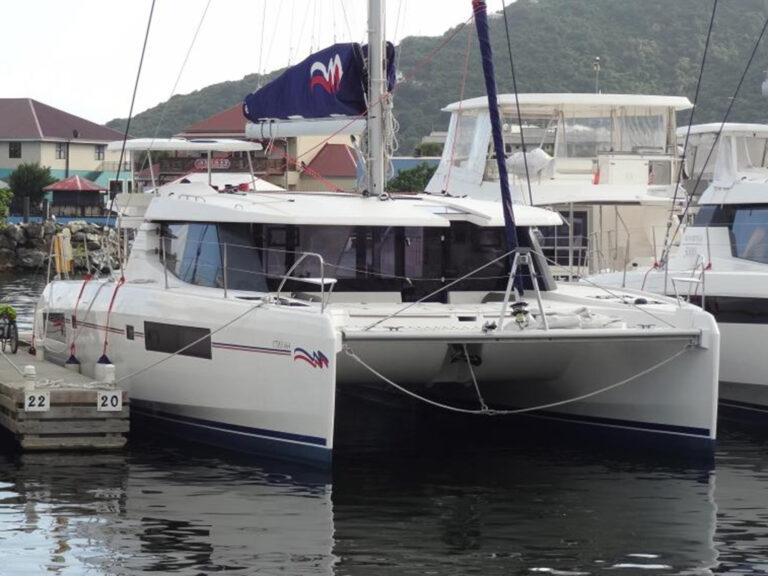
Now For Sale: Leopard 45

The Long Way Around

Sailing to the Land of Shrimp
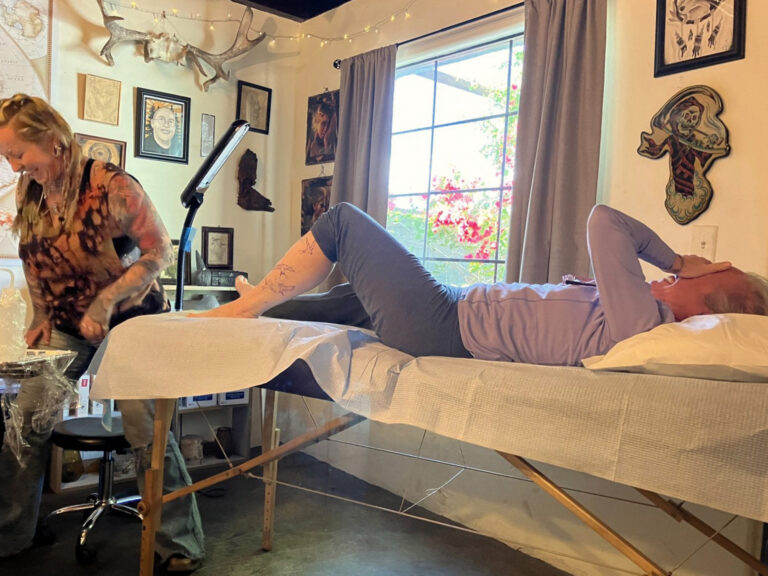
Swallow Tattoos and Sailors
- Digital Edition
- Customer Service
- Privacy Policy
- Email Newsletters
- Cruising World
- Sailing World
- Salt Water Sportsman
- Sport Fishing
- Wakeboarding

- Search forums
- Yachting Monthly's Scuttlebutt
Is a gimballed stove really necessary?
- Thread starter Arcady
- Start date 15 Feb 2021
- 15 Feb 2021
Active member
Let me caveat that question: Is a gimballed stove really necessary on a modern, wide-beamed yacht where the angle of heel is seldom more that 10 to 15 degrees when sailing? Much of my time in recent years has been spent aboard a beamy yacht and I can't remember when I last used the gimbals on the stove. However, much of that was day-sailing and so the number of occasions we tried to seriously use the stove when sailing were limited. I now find my self specifying electric cooking for a new boat with rather longer passages in mind. Given the lack of choice for gimballed induction hobs, I am wondering whether the combination of deep pans and decent fiddles will be sufficient. Thoughts please?!
capnsensible
Well-known member.
I can say we did ok without a gimballed cooker on our own yacht during a 21 year liveaboard period. Moody 33 and lots of ocean sailing. I've sometimes found it easier to lock gimballed cookers off when cooking with the top burners and supervise the pans by holding them. I guess it's another one of those neither right or wrong things, just personal preference!
Arcady said: Let me caveat that question: Is a gimballed stove really necessary on a modern, wide-beamed yacht where the angle of heel is seldom more that 10 to 15 degrees when sailing? .....Given the lack of choice for gimballed induction hobs, I am wondering whether the combination of deep pans and decent fiddles will be sufficient. Thoughts please?! Click to expand...
Deleted member 36384
I have sailed on 70' yachts that had fixed stoves and healed a lot. Deep pots were common to cook with. I do remember spills in the oven and on one occassion extinguishing of the oven burner.
Arcady said: ... I am wondering whether the combination of deep pans and decent fiddles will be sufficient. Thoughts please?! Click to expand...
Arcady said: Let me caveat that question: Is a gimballed stove really necessary on a modern, wide-beamed yacht where the angle of heel is seldom more that 10 to 15 degrees when sailing? Much of my time in recent years has been spent aboard a beamy yacht and I can't remember when I last used the gimbals on the stove. However, much of that was day-sailing and so the number of occasions we tried to seriously use the stove when sailing were limited. I now find my self specifying electric cooking for a new boat with rather longer passages in mind. Given the lack of choice for gimballed induction hobs, I am wondering whether the combination of deep pans and decent fiddles will be sufficient. Thoughts please?! Click to expand...
It's a must for me. In a rolly anchorage it is impossible to make a satisfactory omelette without gimbals. .)
Its a vital thing for us - if you are a day or two on a beat or even a very rolly passage they feel essential compared to the useless flat surfaces around them.
If you make a gimballed cooker installation, with a solid bolt to lock it when not in use, you have the choice. I wonder how many gimballed cooker users actually take the decision to leave them bolted solid, at sea? Why would you? One point is that a swinging cooker, especially a four-ringer with an oven below, uses a huge amount of cubic fresh-air real-estate to swing freely. Especially behind it. Which could fairly be considered wasted space. Pan clamps are all woefully under-engineered (Taylors are not too bad) and pot lids are crucial. Like the heads, the cooker arrangement is often an afterthought, but is in constant use and vital to a happy and safe ship.
My vote would be for gimbals with a lock. I have always found gimbals a blessing in a rough sea.
Our first boat had no gimbals, but pretty good clamps. With the right shape of pan this worked well and we never lost a pan on to the floor. We did make use of a pressure cooker with locking lid for a bit of extra security though. We were able to cook in all sorts of conditions on that boat. The other two boats we've owned both had gimballed stoves. It is definitely preferable, but if for some reason you can't fit one I wouldn't worry about it- just make sure the fiddles/clamps are up to the job, and use appropriate pans, ideally with locking lids. We are also hoping to move towards electric cooking. I don't think it has to be an either-or matter. The gas system will always be there as a backup for us, but 800w of solar and 280Ah of lithium in the tropics ought to let us cook on an induction hob a fair bit of the time. I just want to not have to worry about gas refills and compatibility, and to have a way of cooking without overheating the cabin.
I'm pretty sure Delos gimballed theirs, and they seem a very sensible bunch willing to try new things. I think it was them that put silicone mats under the pans while cooking too, which is a stroke of genius on an induction cooker!
Kelpie said: Our first boat had no gimbals, but pretty good clamps. With the right shape of pan this worked well and we never lost a pan on to the floor. We did make use of a pressure cooker with locking lid for a bit of extra security though. We were able to cook in all sorts of conditions on that boat. The other two boats we've owned both had gimballed stoves. It is definitely preferable, but if for some reason you can't fit one I wouldn't worry about it- just make sure the fiddles/clamps are up to the job, and use appropriate pans, ideally with locking lids. We are also hoping to move towards electric cooking. I don't think it has to be an either-or matter. The gas system will always be there as a backup for us, but 800w of solar and 280Ah of lithium in the tropics ought to let us cook on an induction hob a fair bit of the time. I just want to not have to worry about gas refills and compatibility, and to have a way of cooking without overheating the cabin. Click to expand...
I like gimbals - even if not actually cooking, it’s a lot easier to make a sandwich (for example) on a level surface using the board that fits into the fiddle frame around the top of Ariam’s cooker. But the square-riggers I used to sail in had fixed stoves, and Lin Pardey was vehemently opposed to gimbals in their books, so clearly it’s not essential. I would make sure any fixed stove had a well designed means of securing pots and pans in place. Pete
I couldnt imagine not having a gimballed cooker. We lock it off at anchor sometimes if using the oven as swinging the door open changes the balance of the cooker. At sea gimbals are great with standard pans. If making a cuppa I put the mugs and teapot on the cooker and they dont spill.
If it's possible to specify gimballed with option to lock off I can't think of a logical reason why you wouldn't choose that...
V1701 said: If it's possible to specify gimballed with option to lock off I can't think of a logical reason why you wouldn't choose that... Click to expand...
Its absolutely essential to have a gimbled stove. how on earth could you keep the sausages in the pan without one. Saying that I remember the day when it picked the pan up with 6 bangers well done, got hit by a wave and never found half of them. Steveeasy
Why would anyone need gimbals? Leave the pan and come back to fnd it in the same place. Also goes for your glass of wine whilst tacking...
Members online
- Seashoreman
- WindermereColvic
- Fr J Hackett
- Frayed Knot
- Dominicpriestley
- Jon magowan
- Rhylsailer99
- Openelectron
- AntarcticPilot
- steve yates
- CrossedThreads
- lilianroyle
- RunAgroundHard
- GMs Sceptre
- laurie the sailer
- garymalmgren
- AJ Hutchison

Share this page
- Yachting World
- Digital Edition

Induction cookers on yachts: Why it’s finally feasible to ditch the gas
- November 25, 2020
Advances in electrical technology mean sailors no longer have to rely on gas for making hot meals and drinks. Rupert Holmes reports on the latest generation of induction cookers

With the advances in induction cooking technology, cooking with gas could become a thing of the past
For most of us, cooking with gas has been so much the norm both ashore and afloat that it’s easy to forget the march of yachting technology has the potential to offer better alternatives. Induction hobs have yet to be routinely adopted in the sailing world, but that looks set to change.
Ten years ago the idea of using electricity to cook on any serious cruising yacht would have been a non-starter. However, much has changed in the last decade, particularly the myriad of efficient and affordable ways to deliver large amounts of battery charge, even when cruising in remote locations, and the growing feasibility of fitting large lithium ion battery banks .
Equally, induction hobs have much to recommend them on a yacht. Energy transfer is extremely efficient, which means only the pan and your food is heated, whereas a gas stove heats air, which makes the interior of a boat even warmer in hot climates. At the other end of the spectrum, burning gas releases water vapour, which adds to condensation in cold climates.

Kenyon induction plates
In addition, finding gas can be a problem for longer distance cruisers, who may need to ship a variety of bottles and adaptors to suit those used in differing territories. But if you can generate and store sufficient electrical power to run an induction hob, it’s possible to be entirely self-sufficient in fuel for cooking over extended periods. Induction hobs are also easier to clean and the safety implications of burning gas in an enclosed space are eliminated.
Marine galley specialist GN Espace has waited a long time for the market and onboard infrastructure to be right to introduce an all-electric induction cooker. “Back when we started in 2008 we designed our cookers so that we could produce an electric version when the time was right,” director Ralph Olingschlaeger tells me.
“The market wasn’t there until things started to change a couple of years ago. Since then we’ve seen a rapid trend towards more onboard electrical capacity through the growth of lithium batteries and increased means to generate large amounts of power.”
Article continues below…

Lithium boat batteries: Why now is the right time to upgrade your electrics
Larger new cruising yachts, especially those at the quality end of the market, have been routinely fitted with lithium boat…

How the crew of SV Delos created the ultimate self-sustainable yacht
When Brian Trautman bought a 53ft Amel Super Maramu in 2008 he had little intention of living aboard for ten…
Products for the times
Olingschlaeger says there are still limitations in size and power consumption, but there are enough boats with sufficient battery and generating capacity in the 45-65ft segment for GN Espace to launch a product into this market. The electric version of the OceanChef is a feature-rich cooker that marries an induction hob to a multifunction electric fan oven with grill and a defrost function. It’s a 50cm wide product that can be fitted as a drop-in replacement for many marine cookers.
A power management system limits maximum energy draw to under 3kW, which means the unit can be used with inexpensive standard inverter technology. Nevertheless, it’s a sophisticated product, with a power-boost function enabling 2.5kW to be delivered to a single hob to get a pot boiling quickly. An algorithm is used to learn the heat settings needed to heat a pot from cold to boiling and then automatically reduce heat settings for simmering. There are also ‘bridge zones’ that allow a giant pot to straddle two induction zones.
What were the biggest challenges in creating the device? “Induction cooking is a mature technology that’s driven by the domestic market and its standard sizes,” says Olingschlaeger. The problem is that won’t work on a boat, where cookers even on relatively large craft are smaller than their domestic equivalents. As a result, he says development was an involved process that required a lot of lobbying to get components of an appropriate size and quality.

The OceanChef is thought to be the first gimballing electric cooker with induction hobs designed for the marine market
The first electric OceanChef was fitted to an Arcona 465Z in September. The company has also been in ‘very encouraging’ talks with a number of other builders of quality yachts. Looking ahead, Olingschlaeger says they also plan to develop a smaller model with fewer features at a lower price point.
As far as we know GN Espace is the first company to produce a properly marinised and gimballed induction cooker, but it’s certainly not the only one looking at this market. Dometic announced its Induction Cooktop aimed at the RV market back in 2016 and we’re told now has a product for the marine market in development.
Similarly American company Kenyon offers a number of two- and four-ring induction hobs aimed at various guises of outdoor cooking. Some of these have an optional silicone mat that helps keep pots in place. However, like Dometic, the firm has yet to introduce a gimballed option.
Prices for the OceanChef electric gimballed induction cooker start at £4,794, the non-gimballed alternative costs £1,295, and a built-in multifunction electric marine oven will set you back £2,895.

IKEA’s portable induction hob
Other induction cooking options
If you’re not ready yet to make the step up to lithium ion batteries and a full induction cooking system, but spend time on board connected to shorepower, a single zone portable induction hob is worth considering.
Members of the niche Marine Induction Cooking Facebook group are enthusiastic about these, with the unit simply sited on a worktop when in port. They can be surprisingly inexpensive – IKEA, for example, sells one for less than £40 (ex. delivery) [ed. It’s also available on Amazon for around £65 (inc. free delivery) ].
Beyond that, pressure cookers have long been de rigueur for cruising sailors as they markedly reduce cooking times, which minimises gas consumption and generation of unnecessary heat.
There’s also an increasing contingent with breadmakers on board. Of course, these are by no means essential – it’s possible to bake good bread on a stove top – but the convenience of a breadmaker is compelling. They are surprisingly frugal on power, using around 35Ah – a fraction of the daily electrical consumption of a typical yacht of more than 40ft – to bake a standard loaf.
Solar ovens, which gather heat from the sun to cook your food, are also worth considering. A key benefit for those venturing off the beaten track is the self-sufficiency element in that no fuel is used. They also add a layer of redundancy – you can still make warm food even if other systems have failed. On the downside, solar cookers are by necessity bulky and therefore take up valuable deck space.
First published in the November 2020 issue of Yachting World.
- New Sailboats
- Sailboats 21-30ft
- Sailboats 31-35ft
- Sailboats 36-40ft
- Sailboats Over 40ft
- Sailboats Under 21feet
- used_sailboats
- Apps and Computer Programs
- Communications
- Fishfinders
- Handheld Electronics
- Plotters MFDS Rradar
- Wind, Speed & Depth Instruments
- Anchoring Mooring
- Running Rigging
- Sails Canvas
- Standing Rigging
- Diesel Engines
- Off Grid Energy
- Cleaning Waxing
- DIY Projects
- Repair, Tools & Materials
- Spare Parts
- Tools & Gadgets
- Cabin Comfort
- Ventilation
- Footwear Apparel
- Foul Weather Gear
- Mailport & PS Advisor
- Inside Practical Sailor Blog
- Activate My Web Access
- Reset Password
- Customer Service

- Free Newsletter

Pearson Rhodes 41/Rhodes Bounty II Used Sailboat Review

Hallberg Rassy 42 Used Sailboat Review

How to Perform Your Own Pre-Buy Inspection

Beneteau 323 Used Boat Review

How Does the Gulf Stream Influence our Weather?

Can You Run a Marine Air-Conditioner on Battery Power?

Preparing Yourself for Solo Sailing

Your New Feature-Packed VHF Radio

Practical Sailor Classic: The Load on Your Rode

Anchor Rodes for Smaller Sailboats

Ground Tackle Inspection Tips

Shoe Goo II Excels for Quick Sail Repairs

What Oil Analysis Reveals About Your Engine

An Unusual Sailboat Shines a Light On A Sustainable Future

Is It Time to Get an Electric Dinghy Motor?

Bottom Paint 30-Month Update

Battle of the Teak Cleaners — Snappy Teak-Nu vs. Star Brite

New Seacocks for the Offshore Sailor

Bottom Paint Care

Are E-bikes Worth the Extra Weight and Cost?

How to Handle the Head

How to Select Crew for a Passage or Delivery

Preparing A Boat to Sail Solo

Re-sealing the Seams on Waterproof Fabrics

Waxing and Polishing Your Boat

Reducing Engine Room Noise

Tricks and Tips to Forming Do-it-yourself Rigging Terminals

Marine Toilet Maintenance Tips

Learning to Live with Plastic Boat Bits
- Belowdecks & Amenities
The Boiling Point: Five-Way Single-burner Galley Stove Test
The reliable glomate is the least expensive of five models, but the seacook and forespar mini-galley are safer for use at sea. the pricey origo alcohol stove is slow to boil..
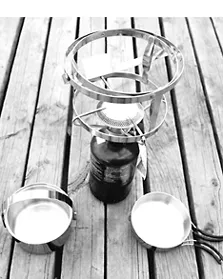
Any boat with a cabin ought to have some sort of stove to heat food and boil water. Sailing is, after all, a civilized pastime, is it not? While larger boats seem to have increasingly complicated galley systems—dedicated freezers, watermakers, ice makers, microwaves, broilers—there’s much to be said for simplicity. After years of trying to maintain big, fancy yachts, it’s not surprising that some owners look forward to downsizing. This is rooted in several common ways beyond a simple reduction in LOA: unloading the auxiliary engine or just carrying a small outboard; hand-pumping water; solar showers in the cockpit; and cooking on a simple, self-contained stove.
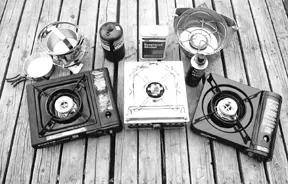
The last time Practical Sailor published test results for single-burner stoves was in February and April of 1994. At that time we examined three butane models, the Origo 1500 alcohol model, and the Seacook from Force 10, which is a successor to the venerable cast aluminum Sea Swing that cruisers often fitted with small kerosene burners like the Primus. The Sea Swing, gimbaled in both axes, was good because you could drop a 2-quart saucepan deep into it, knowing it would never tip over or, short of the boat rolling over, fly out.
Models Available When we began collecting single-burner stoves for this examination we learned that two of the 1994 butane models tested are no longer available in marine catalogs—the Chef-Master BBQ 1000 and Iwatani Cassette Feu B-9. Still among us is the Glomate, but in an updated version, the GM 1600. Kenyon now offers a very similar butane burner, and we look at both in this evaluation.
There are two similar single-point gimbaled stoves as well—the Force 10 Seacook and the Forespar Mini-Galley. Thus we got two sets of head-to-head, apples-to-apples competition. That’s always fun.
The Origo 1500 alcohol stove remains unchanged.
Discount prices for the five stoves range from $40 to about $150. As usual, we checked BoatU.S., West Marine and Defender for prices and were surprised how much they differed. Defender often has the lowest prices, but this time for one stove only, the Forespar Mini-Galley (BoatU.S. and West Marine don’t carry it). Defender’s price for the Force 10 Seacook was $106, West Marine’s price was $109, and BoatU.S. sold it to us for $89. Defender wanted $188 for the Origo 1500, West $159, and BoatU.S. $141. It pays to shop around, though all three of these companies have price-matching policies.
Fuel Choices Three different fuels are used by the five stoves: denatured alcohol (CH3CH2OH), propane or LPG (C3H8) and butane (C4H10).
A standard test is time to boil a quart of water (see the Value Guide at end of story). Results are a function of the Btu (British thermal unit) rating of the fuel and burner size. Alcohol is rated at 2,500-3,000 Btu output, and LPG at twice that—5,000-6,000.
For years, in the 1960s and 70s, marine stoves were predominantly alcohol, and most were pressurized with a small hand pump. They were regarded as the safest because alcohol is supposedly water miscible, that is, capable of being mixed. In reality, as anyone who’s spilled burning alcohol and poured water on it knows, very often the water simply pushes the still-flaming alcohol to a different place. Accidents with pressurized stoves were fairly common because one had to preheat the burners by igniting a small amount of liquid alcohol released from the pressurized tank. If done correctly, you reopened the flow from the tank only when the burner was hot enough to vaporize the fuel. People had all sorts of techniques for judging when that point might be. Some let the primer alcohol burn off completely, then immediately lit the burner; others liked to time the reopening of the flow when there was a bit of flame left in the bowl. Minor fires were commonplace. Those were exciting times.
Anyway, Origo eventually introduced its line of non-pressurized alcohol stoves and most of the problems disappeared. Instead of a pressurized tank, Origo uses a glass wool batting in the tank to absorb the fuel, which makes its operation sort of like a Sterno can. Flame height is controlled the same way, too, by a sliding cover over the burner orifice. It’s much safer and, interestingly, in informal tests the non-pressurized alcohol boils water about as fast as pressurized alcohol. What were we thinking?
Most marine and camping butane stoves use a standard 8-ounce canister. These must conform to Department of Transportation regulations. The two cans we bought, one with the Glomate label and the other with the Kenyon label, were both made in Korea, by the Daeryuk Can Co. and the Tae Yang Industrial Co.
In the 1994 evaluation, we noted that the American Boat & Yacht Council (ABYC) had only recently approved use of these 8-ounce butane canisters in the living areas of boats. And then, only one canister at a time is allowed; spare canisters are supposed to be stored outside, in a compartment ventilated overboard, perhaps where you keep the outboard motor gas tank.
ABYC standard A-30 allows only the 8-ounce butane canister, and not the heavier 16.4-ounce propane bottle commonly used for camp and some marine stoves. This is unfortunate because propane is a commonly accepted fuel; both the Seacook and Mini-Galley use the canisters, and the extra amount wouldn’t seem to pose much additional danger. While we suppose ABYC had to draw the line somewhere, why not at 16 ounces? We point out ABYC’s position in case this is of interest to you or your insurance company.
Several stoves carry warnings about CO (carbon monoxide) and oxygen deprivation. Forespar’s regulator, for example, is a lantern model made by the Century Tool Co. of Cherry Valley, Illinois. It carries the warning (that could apply to all of the stoves in this evaluation) that the device can produce CO, “a colorless, odorless gas which can kill you.”
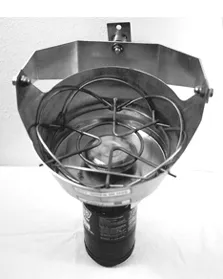
Combustible fuels also consume oxygen, which can lead to asphyxiation. Therefore, Century warns not to use the burner in “tents, campers, pickup toppers, cars, vans and etc.” One could easily add boats. But the same applies to any combustible fuel-burning device, including auxiliary engines, conventional stoves, and cabin heaters. On boats, you can’t always move them outside. To be safe, good installation is paramount, as are safe operating practices.
Evaluation Criteria As in the past, each stove was operated at full throttle to see how fast it boiled a quart of water. Results are similar except for the Origo alcohol stove and, surprisingly, the Seacook LPG stove. Beyond this one empirical test, each stove was examined for quality of materials and workmanship, and safety features.
The stoves are discussed in order of price, beginning with the lowest- cost model.
Glomate GM 1600 The Korean-made Glomate has a black enamel finish over metal stampings. The burner is brass, though it has a silver coating that makes it look like aluminum. The stovetop incorporates a built-in windscreen and corrugated fins to help keep pots and pans from sliding off. ABYC standard A-30, however, requires some sort of potholder, which Glomate offers as an option for $9.99. A-30 also requires permanent mounting to the countertop, which can be accomplished by removing the screws from the plastic feet, drilling holes in the countertop, and then driving in a longer screw or bolt from the inside of the stove.
To ignite the fuel, a canister is inserted into the chamber. A notch in the canister must be aligned with a flange on the valve assembly. Then, by depressing the lever on the front of the stove, a spring-loaded arm hooks the canister collar and pulls it forward so that the canister nozzle is depressed by the valve needle. Fuel now flows to the burner. By turning the temperature control knob all the way to “Max” the piezo-electronic igniter makes a spark next to the burner and—you’ve got flame. The system is reliable and fairly foolproof. Extinguishing the flame is accomplished by turning the temperature control knob clockwise to “off.” Between uses it’s recommended that the canister be unlocked.
Recommended clearances from combustible materials are 8″ front and side, 39″ above.
Glomate recommends burning off fuel in the burner and line. (This makes sense for any conventional propane stove/oven inside the cabin.) After disconnecting the canister, turn the temp knob back to “on” to ignite the remaining fuel.
Bottom Line. In 1994 The Glowmaster GM 1300 was our recommended buy (the name later was changed from Glowmaster to Glomate), based on price, safety features and performance. At $39.95 the GM 1600 also is hard to beat. The finish is not marine, but it’s rugged enough to last for at least a few years. It comes with a rigid carrying case if you want to keep it portable.
Kenyon Express The Kenyon butane stove is very similar to the Glomate. The stampings are different but the principles of operation are identical. Well, there is a minor difference. Whereas the Glomate has the spring-loaded arm to pull the canister by its collar into the valve assembly, the Kenyon has a spring- loaded piece of metal that pushes the bottom of the canister toward the valve assembly. Pull versus push makes a difference with rope and donkeys, but not much difference here, we think.
The Kenyon has the same black enamel finish, circular metal wind guard around the burner, corrugated fins for pots to rest on, and a very similar-looking brass burner.
Unlike the Glomate, whose top grate cannot be inverted level (to prevent placing pots too close to the flame), the Kenyon’s grate can be. This is convenient for storage as it lowers the profile of the stove, but does make it possible to put a pan right on top of the burner, which could be dangerous. You’ll just have to remember to watch it, and caution others.
Like the Glomate, the Kenyon also has a high-pressure auto shut-off feature. In the event that the butane canister or cooker gets too hot—from the sun, spilled grease, etc.—a plunger inside the valve assembly rises and stops the flow of fuel.
Kenyon seems to offer a few more accessories for its stove: “sea legs” suction cup mounting kit, permanent mounting kit (includes stainless steel tabs, though you could screw it to a countertop just like the Glomate), and potholders, which you may recall are required by the ABYC. The potholder from Kenyon is a metal halo that fastens to a bracket on the backside of the unit, and is suspended a few inches above the burner. A carrying case is optional.
One quibble: Kenyon’s stove doesn’t have a full drip pan underneath the burner to catch boil-overs, so be careful of the surface you’re cooking on.
Bottom Line. The Kenyon Express is a slightly updated version of the same stove we’ve used for years of camping both on and off the water. We used it on a trip down the Mississippi River aboard a small powerboat. It still works fine, though the finish is dull and won’t clean up too well. We bought ours from the West Marine catalog for $64.99, but when our Forespar Mini-Galley came from Defender with a copy of their catalog, we saw the Kenyon listed for just $49.95.
In either case, it costs a bit more than the Glomate, but we don’t see any obvious justification for the difference, be it $10 or $25.
Force 10 Seacook Cooking Stove As one would expect from Force 10, this is a substantial piece of equipment. All major parts are stainless steel, though it doesn’t appear to be 316, and we noticed a bit of corrosion around welds. Nevertheless, it’s a quality fabrication.
The Canadian-made Seacook uses a standard 16.4-ounce propane bottle, commonly found in camping stores. It screws into the bottom of the regulator assembly. The manual cautions that the threads are fine and easily cross-threaded. Use a drop of machine oil to minimize the chances of this.
There is no piezo electrode; the throttle must be opened and a match or other flame or igniter held to the burner. The regulator allows for good control of the flame, including low flames, which is important for simmering soups and stews.
The largest pot accommodated is about 7″ diameter, a bit smaller than the Seacook we tested seven years ago. But other changes include some important improvements. Most notably, the side ears from which the bowl suspends from the bracket appear to be longer, so that the center of gravity of the unit (with full pan) is lower. In 1994, we found that with a full pot the stove tended to be tippy, and we recommended lowering the center of gravity by, perhaps, adding a set of short stainless tangs between the bracket pivot bolts and the ears. This no longer appears to be a problem, but we’d still be careful about using too tall a pot. Check for stability before taking your hands off. The Seacook requires a swing radius of 14″.
Another change has been made to the built-in potholder. We thought clever the old Z-shaped rods that fit into the grate and were infinitely adjustable. But so is the new potholder design; it consists of six stainless rods formed in half circles, with each end bent around a circular rod just above the burner. Like a colander, pushing inward on one or two rods forces all of them in, tight around the pot. This potholder also is infinitely adjustable.
The company claims it will burn about 3-1/2 hours on one 16.4-ounce bottle at high setting; that’s more than twice as long as the estimated 1-1/4 hour burn time of other stoves running on an 8-ounce butane canister.
It’s a little harder to light than the Forespar because you have to put your hand down inside the bowl and potholders to hold a match to the burner, but the fine control of the regulator lets you ignite it on a very low flame. The solid-bottom bowl also protects your hand from burns should the pot spill while turning the regulator knob.
As noted above, a major drawback to the Seacook is the ABYC’s condemnation of the 16.4-ounce propane bottle. While we don’t like picking fights with ABYC, we think the Seacook is far safer than any pressurized alcohol or kerosene burner.
In the time-to-boil test we were shocked to find that the Seacook took 11-1/2 minutes the first time, the same as the Origo alcohol stove. It was tried a second time with a wider, shallower pan and it took 8-1/2 minutes. In the chart, we averaged the two times. The Seacook has a good burner, just like the Forespar Mini-Galley, but the large diameter rod grate above the burner seems to be absorbing much of the heat. A redesign again seems to be in order.
Bottom Line. The Seacook won’t double as a camp stove because it has to be suspended, but it’s the one you want for rough weather. At $90, it’s twice the price of the butane stoves, but it’s marine-grade and should last for many years.
Forespar Mini-Galley The Mini-Galley is quite similar to the Seacook but is more lightly made. The mounting bracket arms and stove structure all are made from 1/16″ thick by 1/2″ wide stainless steel bands. The stainless is well polished and seems to be a higher grade than the Seacook.

The Mini-Galley comes with its own pot and lid, which can be turned upside-down for use as a frying pan. Both are tiny—so tiny, in fact, that each hardly holds one serving, let alone enough soup or stew for even a small crew. You’ll be cooking in shifts, increasing time in the galley in what probably will be uncomfortable sea conditions. These small pots do keep the center of gravity low; Forespar says not to use larger pots for fear of spilling the contents. Four stainless steel spring clips inside the stove’s structure can be bent out or in to make the pot or pan secure.
The same 16.4-ounce propane canister is used as with the Seacook, and the same caution applies to potential cross-threading.
Like the Seacook, the mounting bracket is meant to be screwed to any suitable vertical surface, such as a bulkhead or cabinet. It’s gimbaled in both axes so will swing freely regardless of the orientation of the bracket.
Bottom Line. The Mini-Galley is nicely made, well-designed, and should last a long time. It’s lightweight and comes with a nylon storage bag for the pot, and a larger nylon bag for the entire unit. We only wish it held larger pots; when compared to the Seacook, that’s where it comes up short. At $99.95, it’s just $10 more, but we don’t see any reason to fork over a sawbuck.
Origo 1500 Last and most expensive, by a long shot, is the Origo 1500 alcohol single-burner stove. It’s beautifully made in Sweden of highly polished stainless steel.
We’ve already discussed alcohol as a stove fuel—it has a much lower Btu rating than butane or propane, which simply means that it takes longer to cook food.
As a vehicle for burning the fuel, the Origo has its strong and weak points. On the troublesome side is the method of filling the Origo’s fuel drum. The rubber cap is removed (it prevents evaporation even though the fuel is absorbed by the glass wool batting inside the drum) and the drum held at a 45° angle. You have to stop and hold the tank vertical every few seconds to make sure you don’t overfill the drum (you don’t want it coming over the lip of the opening). This ends up being a bit messy, but practice does improve your technique.
Some folks apparently tried filling the drum from the top—a seemingly logical maneuver, but it virtually guarantees overfilling. Origo discourages the practice by printing a stern warning on top of the flame spreader.
The 1500 holds about 2.5 pints and is supposed to burn for about 3-1/2 hours on a full tank. To light, a match is held over the drum opening. The control knob on the front actuates a steel cover that slides back and forth over the opening just like a Sterno can. Marvelously simple. But remember that the flame from alcohol can be almost invisible, so be careful.
There doesn’t appear to be any way to permanently mount the stove to a countertop. For safe, ABYC-approved operation, you’ll need the optional gimbals and potholder. Added to the already high price of the stove, your investment is now over $300.
Bottom Line. There’s no doubt that the Origo is a quality stove, well-made and simple. Alcohol, for all its shortcomings, is not explosive like butane and propane, and many boatowners would trade the longer cooking times for that measure of safety any day. The cost of the Origo, however, seems out of proportion with the others.
Conclusion Though all five stoves tested are single-burner units, they can be divided into two categories twice: those that gimbal and those that don’t; and those that gimbal in all axes and those that don’t. For rough weather, the Seacook and Forespar Mini-Galley are the obvious choices—even if you have a larger boat with a stove/oven. Of the two, we want to favor the Seacook because it holds larger diameter pots, but are annoyed at its long time to boil.
Stoves that can’t be made to gimbal, like the Glomate GM 1600 and Kenyon Express, must be used with care on boats. Securing them to a countertop improves safety, but if the boat rolls too hard a pot could spill or be thrown off, even with the recommended potholder. Therefore, we view these two butane stoves as less desirable. At the same time, their low prices and reliable operation make them easy choices for, say, use on a trailer sailer where, often as not, you might be cooking on the hard. For use on board, consider limiting cooking to the cockpit.
Contacts— Forespar Mini-Galley, Forespar Products, 22322 Gilberto, Rancho Santa Margarita, CA 92688; 949/858-8820; www.forespar.com . Glomate Sport Products, 150 Cooper Rd., Unit G-18, West Berlin, NJ 08091; 609/753-4800; www.glomate.com . 888/386-7868. Kenyon, PO Box 925, 8 Heritage Park, Clinton, CT 06413; 860/664-4906; www.kenyonmarine.com . Origo AB Sweden, 1540 Northgate Blvd., Sarasota, FL 34234; 941/355-4488; www.origo-sweden.com . Seacook, Force 10 Marine, 23080 Hamilton Rd., Richmond, BC V6V 1C9, Canada; 604/522-0233; www.force10.com .
Also With This Article Click here to view “Value Guide: Single-burner Stoves.”
RELATED ARTICLES MORE FROM AUTHOR
Thought you should know that the supplier links either do not work, or the supplier does not offer a single burner stove.
Hey, Jim! Did you ever find a single burner gimballed stove? I am looking for one too!!
Is GloMate still in business? I cant seem to find them.
Here’s our update on this article. Some of the companies in this archive report are out of business or are sold under another brand name.
https://www.practical-sailor.com/belowdecks-amenities/galley/small-stove-update-seaward-stoves-unseat-top-picks
Sure, but the Force 10 Seacook is no longer available/made; closest thing now is a jet boil with an aftermarket gimballed holder.
LEAVE A REPLY Cancel reply
Log in to leave a comment
Latest Videos

What Is The Best Folding Bike For Your Sailboat?

The No Expense Spared Antigua 60 Cruising Sailboat Soolaimon

How To Buy Sails – With Joe Cooper

Bavaria C42: What You Should Know | Boat Tour
- Privacy Policy
- Do Not Sell My Personal Information
- Online Account Activation
- Privacy Manager

- Forums New posts Unanswered threads Register Top Posts Email
- What's new New posts New Posts (legacy) Latest activity New media
- Media New media New comments
- Boat Info Downloads Weekly Quiz Topic FAQ 10000boatnames.com
- Classifieds Sell Your Boat Used Gear for Sale
- Parts General Marine Parts Hunter Beneteau Catalina MacGregor Oday
- Help Terms of Use Monday Mail Subscribe Monday Mail Unsubscribe
Origo stove...gimbal or drop in?
- Thread starter kito
- Start date Dec 11, 2014
- Forums for All Owners
- Ask All Sailors
I decided to not even mess with running propane into the cabin to my new drop-in Atwood 3 burner propane stove top. I am going to pull it out and find either a Origo 3000 with their gimbal kit or a drop-in 4000 that cannot be gimbaled. Question is, is having a gimbaled stove top worth it or more of a p.i.t.a.? I know propane cooks hotter but not a big deal. I used a Origo before and didn't have a problem with it except for maybe the horrible smell of burnt de-natured alcohol. I am leaning more towards the drop-in version with the pot holder kit.
I put gimbaled in mine i can use it gimbaled or stationary...i have two one for the boat and one for my shop
How much do you cook underway? In an anchorage hopefully you're not rolling enough to need gimbaled. We had the Origno in our Ranger and in the Mark 25 and found it very satisfactory. But we needed to cover the burners with a rubber disk to reduce evaporation on the Mark because I think the closures didn't seal very well. Neither were gimbaled.
Yeah, that's what I was thinking. The drop-in is a much cleaner look too. Just would like to not have to stand by the stove in case a roller hits. It seems to me that their gimbal mount would be good for only one direction too. Btw, anyone know why the alcohol/electric version is not available anymore? I can't seem to find any "E" series.
I do not think that the original H30's had a gimbal. They had the 4000 that you are referring to.
kito said: I decided to not even mess with running propane into the cabin to my new drop-in Atwood 3 burner propane stove top. I am going to pull it out and find either a Origo 3000 with their gimbal kit or a drop-in 4000 that cannot be gimbaled. Question is, is having a gimbaled stove top worth it or more of a p.i.t.a.? I know propane cooks hotter but not a big deal. I used a Origo before and didn't have a problem with it except for maybe the horrible smell of burnt de-natured alcohol. I am leaning more towards the drop-in version with the pot holder kit. Click to expand
Alan Gomes said: I pulled my Force 10 propane cooktop and replaced it with a Cookmate two burner non-pressurized alcohol. The Cookmate is an Origo clone that uses non-pressurized canisters that are in every respect identical. It dropped into the same cavity with little modification. It is not gimbaled and I've not found that to be a problem so far, even in a rolly anchorage. There are clamp on pot holders made for it but I've not seen a need for them. As for the smell, experiment with different brands of alcohol because I think there is a difference. I've not had a real issue with smell. I'm using the Crown brand from Lowe's. One bit of technique that can help is to first run the burner at low heat to let the alcohol vaporize. Most of the smell happens when the burner is not sufficiently hot. Also, there's usually no need to "floor it" for most applications. I truly don't miss my propane cooktop one bit; I find that that alcohol stove cooks my bacon and eggs and heats water for coffee just as well as the propane stove ever did. As for covering the canisters, a cheaper way to go than buying the pre-made covers is to get a sheet of neoprene rubber from McMaster-Carr and cut yourself a few discs from it with a scissors. Try McMaster-Carr number 8525T31 for $3.92. Click to expand
a gimbal can be a PITA, especially if it isnt balanced correctly.... good gimbaling isnt just a matter of putting a pivot pointl in the mounting of it. if you dont get the pivot high enough, the stove will tilt out of level too far to be of any use when you put a pan of soup on the burner, and if you get the pivots too high, the swinging of the stove will get out of time with the motion of the boat and can actually buck the contents out of the pan.... and if there isnt a way to lock the gimbal on any gimbaled stove, it wont pass ABYC standards... but when they are set up correctly, they are nice., but im not sure the origo has enough weight to gimbal it properly without adding weight to the bottom of it. the plus side to the origo is that any pan that sets on it will be centered over the burners, unlike a 3-burner stove... the pivot point should be about 2.5"-3 above the surface of the stove where the pan sets for the best results....
kito said: You're right Steve, didn't see any evidence of a gimbal mount....just an empty hole when I bought it. But I did see an old rusted out drop-in Kenyon in his trash pile though Not sure if Origo was even around in 79. Click to expand
Good info Centerline. I need to see if the Origo has an adjustment for that.
Merlin Clark
Big difference between the old style alcohol stove and todays. Only fire I've ever had on a boat in about 30 years of sailing was a pressurized stove. It now resides in Davy Jones locker! The Origo I have burns almost as hot as propane and doesn't stink. May be your fuel.
A while back I ran into a two burner non pressurized Origo stove but the kicker is that it also has two electric elements over the burners. I always thought it would be a good hybrid to use under way or with a marina shorepower. I have not been able to justify parting with our propane stove but I do use the Origo for outside cooking in an RV. Forgot what the number model for the unit was but it could have been 5000 or 6000. I made a wood frame for it and it looks and works great.
I regularly go to Catalina Island, and have an Origo. I've considered the gimbals, but have not found a set that work with the stove on a countertop (we don't have a cutaway). If you don't use gimbals, you WILL WANT potholders...especially with beams narrower than 9 feet. Jeff
Charlie Jones s/v Tehani
LOL well, gimbaling can be nice when you want coffee Pic NOT adjusted for heel angle
Attachments

Benny17441 said: A while back I ran into a two burner non pressurized Origo stove but the kicker is that it also has two electric elements over the burners. I always thought it would be a good hybrid to use under way or with a marina shorepower. I have not been able to justify parting with our propane stove but I do use the Origo for outside cooking in an RV. Forgot what the number model for the unit was but it could have been 5000 or 6000. I made a wood frame for it and it looks and works great. Click to expand
shemandr said: ... But we needed to cover the burners with a rubber disk to reduce evaporation on the Mark because I think the closures didn't seal very well..... Click to expand
Kestle said: If you don't use gimbals, you WILL WANT potholders...especially with beams narrower than 9 feet. Jeff Click to expand
centerline said: ...the origo 3000 cannot have gimbals attached to the sides of it... .... Click to expand
Running Late
cookmate and stove I had a 1981 Hillerange pressurized alcohol stove/range that worked, but with spouse/guests not so much. After using a fire-extinguisher once to often, I came up with a compromise that works remarkably well. I wanted to keep the gimballs, did not want pressurized EtOH top stove but wanted the oven. My solution: Dismantle the top range burners and replace with a Cookmate nonpressurized 2 burner range. The original Hillerange pressurized stove remains and the frame remains gimballed. The Oven works well and is useful for occasional baking but is not fraught with flashback issues that the top range was. (I actually bought a new Campstove ETOH tank for the oven a fews years ago) I love the Cookmate. It fills and lights easily, it boils a large teapot in 5-7 minutes and has no flashback issues. I was able to retain my original Gimbal setup for Stove/range and have functional oven and range for cost of the Cookmate which was pretty darn cheap (from Oswego). Will try to post pics of this setup-it looks like standard stove setup unless carefully inspected. Took me 20 minutes to take apart the top of the Hillerange. Only regret was not doing this 6 years ago when I bought the boat. Chris O Running Late Original deathtrap http://forums.catalina.sailboatowners.com/attachment.php?attachmentid=83010&stc=1&d=1418370965 top burners replaced with Cookmate nonpressurized stove with Gimbals and oven intact http://forums.catalina.sailboatowners.com/attachment.php?attachmentid=83006&stc=1&d=1418370434 Teapot after 5 minutes-ready to make coffee http://forums.catalina.sailboatowners.com/attachment.php?attachmentid=83011&stc=1&d=1418371019

- This site uses cookies to help personalise content, tailor your experience and to keep you logged in if you register. By continuing to use this site, you are consenting to our use of cookies. Accept Learn more…
🚚 FREE US SHIPPING ON ORDERS OVER $30 🚚

Let’s Get Cooking: Marine Stoves for a Gourmet Galley
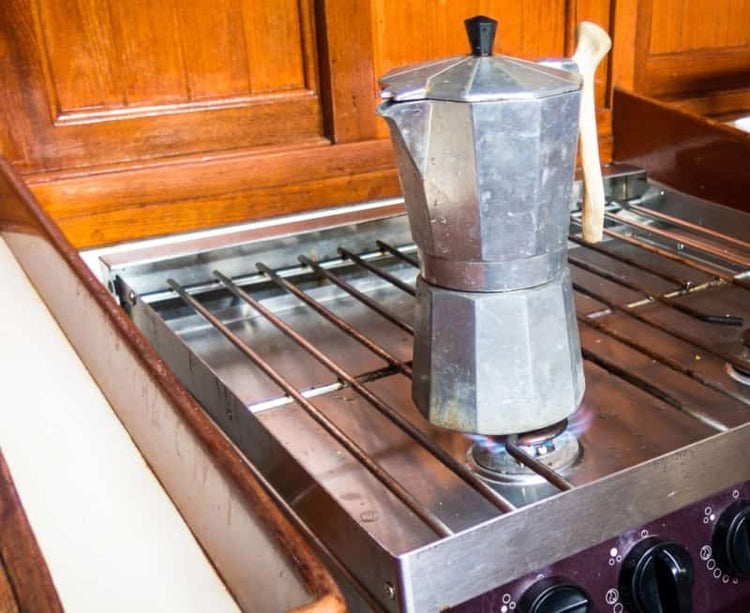
Imagine the scent of bacon, eggs and freshly-brewed coffee wafting through the boat in the morning. When it comes to cooking onboard, most boaters are content to use a good old portable grill. But what do you do when you crave more than hot dogs, burgers and the occasional BBQ chicken?
If you liveaboard or plan to be on your boat for an extended time, you'll probably want to save a little money and calories by preparing some of your own meals. Dining out while traveling, especially by boat, is wonderful. But sometimes it's nice to just stay put.
If your boat's big enough for a galley (kitchen in boat talk), then you'll wanna brush up on marine stove knowledge. Regardless of how big the galley is, you can find a marine stove to fit your needs for sautéing, baking or just boiling a pot of water.
A wide range (pun intended) of marine stoves are available on the market. Depending on your boat galley's available space, you can find stoves with just a cooktop or with an oven.
Whether you're replacing a current stove or searching for one to add to your home on the water, scroll on down to discover safe and efficient marine stoves for your trawler , cabin cruiser, sailboat or canal boat .
What Makes a Marine Stove Different From a Regular Stove?
- Compact in size: One noticeable difference in marine stoves are their size. Boat galleys are not as spacious as the kitchen in your house, so the stove (as well as other appliances) needs to fit into tighter spaces.
- Gimbaled: Since boats are nearly always moving, a marine stove must pivot to stay level. This is called gimbaled. The stove has two pivot points that allow it to swing, which keeps pots or pans from sliding off onto the floor. Typically, sailboats have gimbaled stoves. Powerboats usually don't have gimbaled stoves, as they tend to stay steadier than sailboats.
- Pot restraints: Metal brackets or clamps go around the pot to hold it in place.
- Securely latched doors: Doors are kept shut by secure restraints so they don't just fall open on their own.
- Stainless steel: Marine stoves are usually made from non-corrosive materials such as stainless steel , making them less susceptible to rust.
Considerations for Cooking on Board a Boat
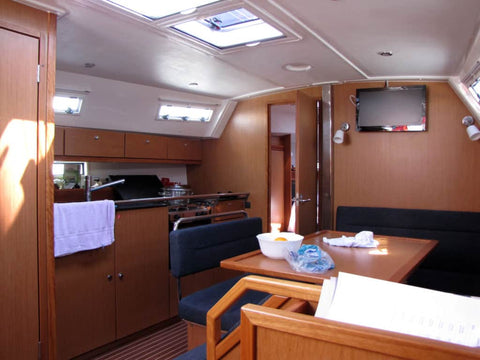
Cooking on board, like other actions on a boat, requires new approaches to everyday kitchen practices. First and foremost, keep those knives in a drawer.
- Eliminate glass - This one doesn't need an explanation. And don't worry, you don't need to stick with Solo cups and paper plates. A variety of brands make quality acrylic and non-shattering dishes and drinkware. Tervis (check prices on Amazon) is one of my favorites.
- Purchase non-slip products - Non-slip is your new best friend. This goes for cutting boards, knives, dishes and anything imaginable.
- Allow ventilation - Your boat galley's confined space is going to produce extra heat. Open a window or leave the hatch open for a nice breeze.
- Condense food and storage - Your boat galley's limited space also means you'll need to put on your creative thinking cap when it comes to food and accessory storage .
- Combine Cleaning products - The same Better Boat scuff erasers you use on the rest of the boat can be used to remove stains, drips and such from your marine stove. Simply wet, squeeze and wipe. For tough stains, accidental boil-overs and rust buildup, stainless steel scrubbers work wonders on pots and pans. Even 100% biodegradable boat soap can be used for dishwashing chores along with a microfiber cloth .
Check Price on Amazon - Better Boat's boat erasers have a textured surface and a reinforced core for extra durability to remove shoe scuffs, dirt and stains on upholstery , consoles and walls.
Types of Marine Stove Fuels
I was surprised to discover just how many marine stoves are available. The main differing factor is the type of fuel they use. Combustible fuel, as well as electricity, are two energy sources that provide power for marine stoves.
Alcohol marine stoves, which heat by way of pressurized tanks or non-pressurized burners, come in a wide variety of makes and models.
Alcohol marine stoves are a safe choice. If there's a fire, it can be extinguished with water.
On the downside, alcohol lacks in providing a high level of heat, which puts it on the less efficient side. It's also expensive and gives off an unpleasant odor.
Diesel marine stoves are mainly used in commercial boats. Diesel burns very hot and is cheaper than alcohol. However, on the negative side, it can leave soot when burning and puts off a terrible odor.
Without an open flame, electric stoves are the safest choice out there. Unfortunately, they're also the most expensive because they require a large amount of electricity from generators or marina shore power. But if your boat has an AC genset, you're good to go with an electric marine stove.
Propane, also known as Liquid Petroleum Gas, has become the fuel of choice for many marine stoves. It has a high heat factor, lights quickly and has no offensive odor.
The major safety factor with propane is that it can ignite and cause an explosion. However, safety features like a propane fume detector (check price on Amazon) should be put in place to alleviate this worry.
The Best Marine Stoves
Let's discuss the different brands and features of marine stoves. Depending on the size of the galley, you can keep it simple or go full-on gourmet if you so choose.

Force 10 has made marine stoves for more than 30 years. They make gimballed, built-in and cooktop marine stoves. Two, three, four and five-burner versions are available in gas or electric models.
Features include stainless steel construction, ceramic glass cooktops, thermocouple protection on burners, removable top grates and slide-away oven doors.
Dometic Origo
Along with cooktops and stoves, Dometic Origo (check prices on Amazon) makes a variety of marine stove accessories such as pot holders, flame spreaders and stove gimbals.
Pressure-free gourmet stoves feature spacious ovens, adjustable oven racks, roasting pans, gimbals and two burners. You can enjoy that Thanksgiving turkey or Christmas ham on the water. Two and one-burner stove tops are also available.
Seaward by Whale Marine
If you're searching for a cooktop, Seaward offers great choices. They make three-burner and two-burner cook tops (check price on Amazon) with marine-grade steel housings and aluminum top burners.
Thermocouple valves shut off if the burners are extinguished. The cooktop heats quickly and the smooth glass wipes clean.
Dickinson Marine Two-Burner Cooktop
This Dickinson Marine two-burner drop-in propane cook top (check price on Amazon) is quite an efficient stove with a powerful "Triple style" 11,000 and a 7,000 BTU burner. The cooktop is also a breeze to install and includes under-counter brackets.
Avanti GR2013CSS Gas Range
For a boat with not much galley space, this Avanti 20-inch wide freestanding gas range marine stove (check price on Amazon) is the perfect option.
It might not be ideal for monohull sailboats that tend to sway, as it lacks gimbals (although you could install your own), but it could work for a trawler or more stable catamaran.
It also offers automatic electronic ignition and a glass oven door with a light to check on meals.
What to Cook With Your Marine Stove

They say every meal tastes better on a boat. I would tend to agree. With all this talk of stoves, ovens and cook tops, I'm getting hungry.
Put that new marine stove to good use and collect a few cookbooks (all available on Amazon):
- The Boat Galley Cookbook: 800 Recipes and Essential Tips for Cooking Aboard
- The Boat Cookbook: Real Food for Hungry Sailors
- Boat Food: The Cookbook for Boaters
- The One Pan Galley Gourmet: Simple Cooking on Boats
- Margaritaville: The Cookbook: Relaxed Recipes for a Taste of Paradise Technically, this one is not geared toward boat cooking, but I can't combine boating and cooking without thinking of Margaritaville. It goes against all I hold near and dear to my tropical heart.

- choosing a selection results in a full page refresh

Please verify you are a human
Access to this page has been denied because we believe you are using automation tools to browse the website.
This may happen as a result of the following:
- Javascript is disabled or blocked by an extension (ad blockers for example)
- Your browser does not support cookies
Please make sure that Javascript and cookies are enabled on your browser and that you are not blocking them from loading.
Reference ID: e305a387-15b6-11ef-9891-57cf3a94c157
Powered by PerimeterX , Inc.

COMMENTS
What is a Gimbal or Gimballed Stove? In short, a gimbal stove has the ability to swing - with the motion of the boat - so that, just like your legs and knees "swing" with the movements to keep you from tipping over, the stove swings so that pots and pans and tonight's dinner don't go sliding off and crashing and splashing all over the galley (or the cook)!
If you own a sailboat, installing a setup that is gimbaled means the stove and oven will rock counter to the boat's movement, helping to prevent hot pans from sliding and liquids from spilling as the boat heels. Marine stoves use one of several combustible fuels or electricity to produce heat for cooking onboard.
Sailors with stoves that pivot in the direction of heel will want a gimbaled stove, while powerboats and sailboats with cross-mounted stoves will not need them. A variation is the Drop-in Range, which sits flush in a countertop. West Marine is committed to outfitting your life on the water. With over 250 store locations, 100,000 products in ...
Check out Using Gimbals on a Boat Galley Stove. This episode of The Boat Galley Podcast is sponsored by Marmara Imports. Their hand loomed, fair trade, organic cotton Turkish towels are highly absorbent, dry quickly, fold flat and are soft and luxurious: perfect for life aboard! Use coupon code Podcast10 for 10% off any order of $40 or more.
This video shows the refinements I made to the DIY single-burner gimbal stove I built for our 20' sailboat. The new mount provides much better stability, loo...
5 burner gimbaled gas cooker. $2,999.00. Ideal for sailboats Force 10's semi-custom gas stoves and gimbaled gas stoves allow you to cook easily on board in any weather. All marine-grade stainless steel, with or without grill, electronic ignition. Made in France by Eno.
In using a gimbaled stove, there are two important points: Most gimbal systems will let the stove swing 20 to 30 degrees, at which point it will crash against the back wall. If it hits with any force, pans are likely to fly off the stove onto the floor or onto the cook. While pot restraints keep pans from sliding, a sudden crash can bounce the ...
A gimbaled stove means you can light the stove and boil water while the boat is healed 20 degrees. Trying that on a fixed stove top means the water will not stay in the pot and the flame will rise at an angle not directly under the pot. Finding one in a boat consignment shop or from a boat yard who is dismantling a parts boat may save some bucks.
A quick look at how I modified a camping stove (MSR dragonfly) to use on-board, so I can heat food when the sea is rough.Also check out -: http://atomvoyage...
The price range for a new two- or three-burner electric marine stove and oven is $1,500 to $2,000; for one- and two-burner electric and induction cooktops, from the simple to the sublime, the price ranges from $100 to $900. Replacing your galley range will update the look of your interior and make meal prep more enjoyable.
Our first boat had no gimbals, but pretty good clamps. With the right shape of pan this worked well and we never lost a pan on to the floor. We did make use of a pressure cooker with locking lid for a bit of extra security though. We were able to cook in all sorts of conditions on that boat. The other two boats we've owned both had gimballed ...
Prices for the OceanChef electric gimballed induction cooker start at £4,794, the non-gimballed alternative costs £1,295, and a built-in multifunction electric marine oven will set you back £2,895.
There are two similar single-point gimbaled stoves as well—the Force 10 Seacook and the Forespar Mini-Galley. Thus we got two sets of head-to-head, apples-to-apples competition. That's always fun. The Origo 1500 alcohol stove remains unchanged. Discount prices for the five stoves range from $40 to about $150.
The Origo stove, recognized as the best alcohol stove available, is popular in the leisure markets in the U.S. and Europe, commonly for boating and camping use. [10] The stove's working life is to projected to be 5-10 years for daily use. [10] Project Gaia works to adapt the stove to local cooking needs and habits.
This is called gimbaled. The stove has two pivot points that allow it to swing, which keeps pots or pans from sliding off onto the floor. Typically, sailboats have gimbaled stoves. Powerboats usually don't have gimbaled stoves, as they tend to stay steadier than sailboats. Pot restraints: Metal brackets or clamps go around the pot to hold it in ...
I make an inexpensive DIY gimbaled stove for a sailboat that stays level when things get rocky!My Amazon affiliate links to products used in this video:- Gri...
Stoves can be used free-standing or surface mounted, and are suitable for cooking in a seaway with optional gimbals and potholders. Stainless steel canisters, with wicking, non-flammable material, hold enough denatured alcohol to burn 4-7 hours before refilling. Boiling time for one liter (34oz.) of water is just 10 minutes.
A nice addition is an included set of pot holders for each burner on the cooktop. Force 10 two-burner gas stoves are available in 6 sizes. All have one 8200 BTU and one 3400 BTU top burner, and an oven with a 5100 BTU burner, and a 5500 BTU broiler. Features —. • Gimballed to maintain a level cooking surface in a seaway.
Features: Optional gimbal kit for Dickinson Mediterranean and Caribbean propane stoves. Designed to attach to the side of the propane stoves. Allows the stoves to swing with boat's angle in rougher waters. Owner's Manual. WARNING. This product can expose you to chemicals which are known to the State of California to cause cancer, birth defects ...
Bering Diesel Marine Stove. Available in 2 options. $1,956.29 - $2,105.98. Special Order Only. 1-45 results of 76. 1. 2. As premier suppliers of marine stoves and cooktops, Fisheries Supply provides reliable propane, electric and diesel-powered cooking appliances from trusted brands including Dickinson, Force 10 and ENO Stoves, safe for vessels ...
Made from scrap plywood metal brackets and a few nuts a bolts. This was for fitting an origo 1500 alcohol stove however can easily be modified for other stov...
Two-Burner Gimbaled Propane Cooktop. Model # 11853116 Mfg # 062391015301. $499.00. Buy More, Save More thru 5/13 with code SAVEMORE. Spend $100, Get $10 off. Spend $200, Get $25 off. Spend $300, Get $50 off.
Re: Making a gimballed stove. Next step was to make the gimbal and holding bracket. I used 1/8" stainless steel bar stock from Online Metals throughout the project. A machine shop bent the stock into a circle that will fit our largest pan and welded it. I was able to do the other cuts, bends, and drilling myself.